Epson EH-TW9100W Review
Epson EH-TW9100W
Wireless video convenience meets strong performance in Epson's latest 3D LCD projector.
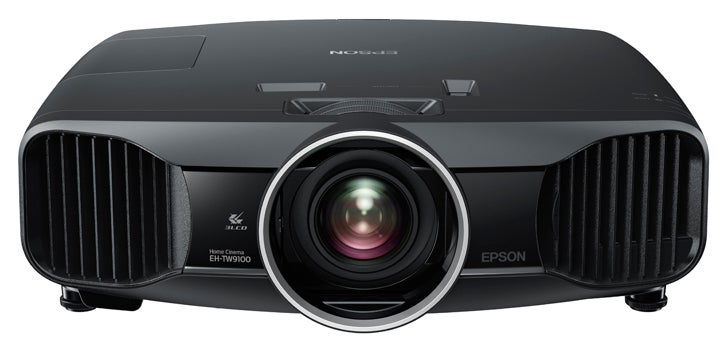
Verdict
Pros
- Mostly excellent 2D and 3D pictures
- Very easy and flexible to set up
- Runs very quietly in Eco lamp mode
- WirelessHD system introduces outstanding connection options
Cons
- Native panel alignment not the best
- High input lag when using the WirelessHD system
- WirelessHD system didn't like our Onkyo receiver
Key Specifications
- Review Price: £2899.99
- LCD projector
- active 3D support
- 320,000:1 claimed contrast ratio
- ISF certified
- Wireless HDMI included
Introduction
Looking back at it now, the Epson TW9000W
projector was quite a watershed product. For as well as redefining the
2D and especially 3D picture quality we could expect for under £3,000
(forcing JVC to get its prices similarly low), it also introduced the
brilliant idea of wireless HD video transmission to a projector for the
first time.
We’re pretty stoked, then, by the arrival on our
projector stand today of the TW9000W’s eagerly anticipated sequel, the
TW9100W. Especially as this new projector comes packing a more flexible
version of the wireless HD system and a contrast ratio that rises from
the TW9000W’s already impressive 200,000:1 to the heady heights of
320,000:1.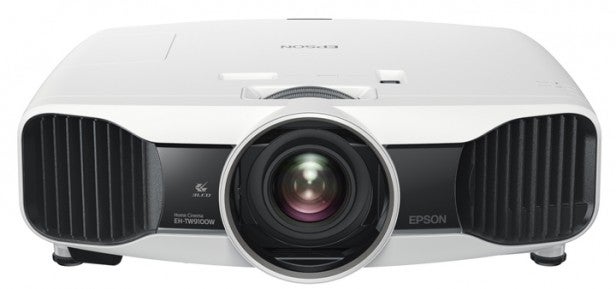
Admittedly
this figure isn’t a ‘native’ one like the 100,000:1 and higher figures
quoted by some of JVC’s D-ILA home cinema projectors now, meaning it
relies on a dynamic contrast/iris system for its contrast claims and so
could suffer with brightness instability and a lack of punch and shadow
detail during dark scenes. There’s also no avoiding the fact that
Panasonic’s AT6000E projector claims an even higher dynamic contrast of
500,000:1. But the bottom line is that 320,000:1 is still a very large
figure for an LCD projector, and should hopefully result in pictures
that look extremely dynamic and enjoy a profound black level response.
Epson EH-TW9100W – Design
Aesthetically the TW9100W is
pretty much identical to its predecessor. Which is no bad thing, since
its combination of a white main top and side plate, contrasting black
front edge, large centrally mounted lens and subtly rounded edges make
for a projector that’s really easy on the eye. Just bear in mind that
it’s got quite a large footprint for a relatively affordable projector.
Epson EH-TW9100W – Connectivity
The TW9100W’s connectivity initially looks in line with that of the
TW9000W too, with its rear boasting highlights of two HDMIs, component
video inputs, plus RS-232 control port and 12V trigger output
installation aids.
However, there’s a big surprise in store when
you look at the TW9100W’s WirelessHD transmitter. For while the HD video
transmitter on the TW9000W only carried one HDMI, the larger one you
get with the TW9100W remarkably carries no less than five HDMI inputs.
This means it’s effectively a very handy HDMI switchbox, allowing you to
shift between as many as five different video sources just by cycling
through them using a set of buttons at the bottom of the (large, backlit
and well laid out) main projector remote control.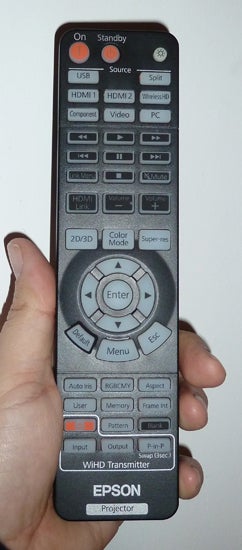
The
potential convenience of being able to connect up to five sources to
the TW9100W without having to worry about trailing five separate cables
right around or across a potentially large room really can’t be
overstated, and seems at this stage at least to make the £300 price
premium the TW9100W commands over the non-WirelessHD TW9100 seem like
money well spent.
The multi-HDMI streaming is supported by an
onscreen menu, which even shows you what video is playing through each
input via a row of small, selectable ‘windows’.
The actual
process of picking which of the input ‘windows’ you want to watch is a
touch faffy, but it’s hard to be churlish about this when the TW9100W is
trying so hard to make our lives easier in so many ways. You don’t even
need to worry about placing an external WirelessHD receiver somewhere
near the projector, as the necessary receiver is built into its
bodywork.
Epson EH-TW9100W – 3D Capable
As is the TW9100W’s 3D
transmitter. For yes, as with its predecessor, the TW9100W plays active
3D pictures. It even ships with two pairs of 3D glasses – pretty
generous given its aggressive sub-£3,000 pricing.
The
convenience pointed to by the wireless HD transmission and HDMI
switching is backed up by the simplicity of the TW9100W’s other main set
up areas. For instance, it features simple and robust zoom and focus
wheels accessible through its top edge, and at 2.1x the level of optical
zoom available is excellent, making it easy to adapt the TW9100W to a
wide range of room and screen sizes.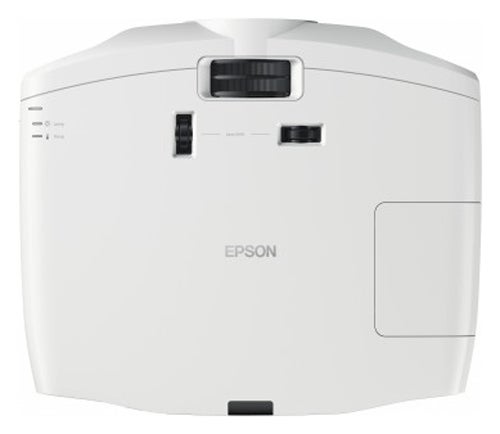
Also
supported are vertical and horizontal optical image shifting, and this
is extensive enough to mean that in the vast majority of cases users
won’t have to resort to using the projector’s keystone correction system
(which essentially distorts the picture).
Epson EH-TW9100W – Interface
The
TW9100W’s onscreen menus, meanwhile, are very good for the most part.
They’re easy to read and generally divide options across their submenus
fairly sensibly, and they harmonise nicely with the tactile remote
control.
Delving into the menus’ features uncovers plenty of
genuinely useful calibration aids – along with a few intriguing
oddities. The immediately useful stuff includes a series of Kelvin-based
colour temperature presets (including the best-for-video 6500K); Eco
and normal settings for the lamp output; a series of straightforward
gamma settings; offset and gain adjustments for the RGB colour elements;
hue/saturation/brightness adjustments for the RGBCMY colour elements; a
skin tone adjustment; and a trio of colour gamut settings covering the
HDTV, EBU and SMPTE-C systems.
Among the more esoteric stuff, meanwhile, are an Epson Super White option; Off, Normal and Fast settings for the projector’s auto iris system; a Super Resolution processing system; Epson’s Frame Interpolation system for improving the smoothness and clarity of motion playback; Fine and Fast Image Processing modes; and a very peculiar Correct LCD Align option in the ‘Extended’ menu.
Features in depth
Going through these (briefly) in turn, Super White can help if your settings are leaving whites looking a bit ‘flared out’ and over-exposed. The auto iris settings let you adjust the contrast of images via an iris regulating the amount of light coming out of the projector.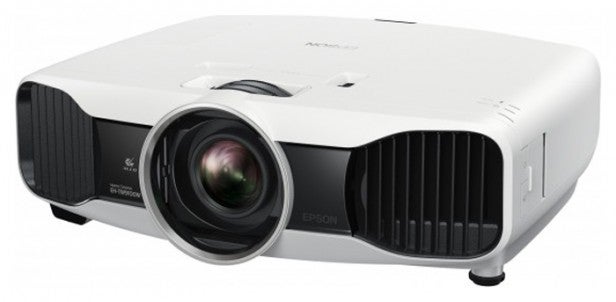
Super resolution can boost the apparent detail level of the image (though more often than not it also makes pictures look more noisy, so is probably best avoided). The Frame Interpolation system adds extra, calculated image frames to try and reduce the judder you can get with projected images, especially 24p Blu-rays – but as we’ll see later, Frame Interpolation won’t be to everyone’s tastes.
The Fine and Fast processing option gives gamers a simple way of turning off the vast majority of the projector’s processing to reduce the potential for gameplay-damaging input lag (no actual gaming picture preset is provided).
Correct LCD Align
The Correct LCD Align option, finally, uses a scaling system to adjust the image going into the blue and red LCD panels to make sure there’s no red or blue ‘bleed’ around the edges of bright objects. This works pretty surprisingly well on one level, clearly making the edges of the white parts of white-on-black test signals – or even the TW9100W’s own menus – look markedly cleaner.
It also allows you to use a built-in crosshatch test pattern to fine tune the alignment yourself, which we’d recommend you do. Certainly on our test projector it helped us improve some red bleed in the picture’s bottom left quarter.
Alignment concerns
However, it seems a shame to have to be mucking about with scaling even just one colour element of the picture to deliver a state of alignment that would ideally have been delivered ‘naturally’ via the projector’s physical construction. Toggling the feature on and off also ironically highlights the colour misalignment you get in the projector’s native state.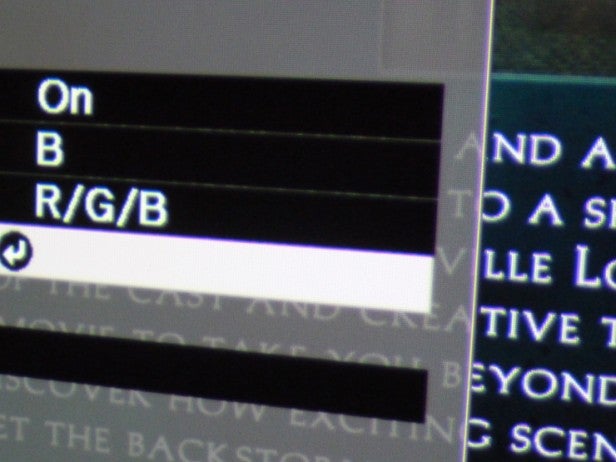
The first thing that strikes us as we settle down to watch the TW9100W at last is how much better its pictures are than those of the TW9000W, especially when it comes to 3D.
There are two main reasons for this 3D advance. First, even though the TW9100W’s 2400 Lumens of claimed brightness isn’t any higher than the figure quoted for the TW9000W, 3D pictures look more punchy and dynamic. A result, we imagine, of the new model’s considerable contrast improvement.
3D punch
This extra punch makes 3D images more engrossing and naturally coloured, and also makes watching them feel like less of a compromise versus watching in 2D.
The other clear improvement to the TW9100W’s 3D performance concerns crosstalk. We saw noticeably less of this double ghosting problem than we witnessed either on the TW9000W or, more tellingly, Panasonic’s recent AT6000E. This lets full HD 3D Blu-rays look sharper, more detailed, and more naturally full of depth.
Having made a comparison with the Panasonic AT6000E, we should also stress that the Epson’s 3D pictures look much brighter than those of the Panasonic.
Panasonic comparisons
The Panasonic’s 3D pictures have a bit more colour accuracy/finesse and arguably slightly more pleasing 3D motion reproduction. Plus Panasonic’s projector carries an AV enthusiast-friendly ‘lens memory’ for storing lens settings while the Epson does not. However, for us crosstalk and brightness are our two number one bugbears about the active 3D system. So the Epson handling both issues better is a big deal.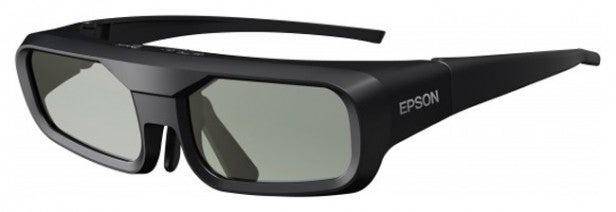
It’s worth adding here while we’re in comparison mode that the TW9100W also suffers much less with crosstalk than JVC’s otherwise terrific X30 model. We haven’t, though, yet tested the X30’s new replacement, the X35.
2D
Turning to 2D, the TW9100W is again spectacular fun to watch – as long as you’re careful with its settings. The most important and surprising setting point is that you use the projector’s Natural picture preset as your calibration starting point rather than the Cinema one you might have expected to be using. For the Natural mode delivers a less ‘aggressive’ colour palette that seems much more natural and even than the colours you get with any of the other presets.
A little colour tweaking is still advised to reduce a slight blue tinge that’s otherwise present during dark 2D pictures, but really, as presets go, the TW9100W’s Natural mode is a doozy.
Strong Contrast
As well as its strikingly natural colour palette, the TW9100W’s 2D pictures are distinguished by the strength of their contrast. Dark scenes reveal a black level response that’s way ahead of the already good effort of the TW9000W, with only the slightest hint of residual grey clouding.
This is especially true if you use one of the TW9100W’s dynamic iris modes – something you can do with reasonable impunity, as it happens, as neither setting tends to cause much in the way of brightness instability. Also impressive about the dynamic iris modes is how clever they are when it comes to judging the best light balance to deliver enhanced black colours without crushing out too much shadow detail.
The TW9100W’s 2D pictures look slightly brighter than those of the TW9000W too, though this is probably thanks to the improved contrast rather than any real leap in the amount of light leaving the projector.
Next on the TW9100W’s hit list is both the amount of detail evident when watching HD pictures, and the surprisingly engaging quality of its upscaling performance on those (thankfully increasingly rare) unfortunate occasions where you have no choice but to watch standard definition.
Motion handling
This sharpness does drop off a bit, it must be said, when there’s a lot of motion in the picture. But you can reduce this motion resolution issue reasonably (though not immaculately) satisfactorily via the Motion processing mentioned earlier. Don’t use this on anything higher than its lowest power setting, though, or else you can start to see some flickering artefacts, and may find the degree of fluidity being added to the picture stopping it from looking ‘cinematic’.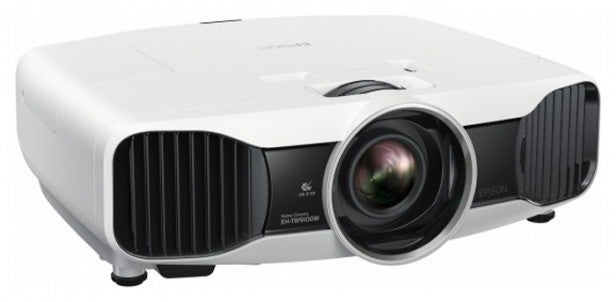
It suddenly occurs to us that we haven’t yet mentioned Epson’s WirelessHD system here. Which is actually a good thing, for it means that we’ve been happily testing various sources without even remembering that we’re watching them via ‘the ether’ rather than a normal cabled connection.
WirelessHD pros…
Switching to a cable connection confirmed that there really isn’t any clue in the appearance of the WirelessHD pictures to show that you’re watching them rather than wired options.
Furthermore, we suffered no dropped connections at all – even momentary ones – in more than four days of constant use, and also suffered less ‘handshake’ issues between the projector and the Wireless HD transmitter than we did with the TW9000.
…and cons
The only early problem we came across with the WirelessHD system, in fact, was that it didn’t seem to like outputs from our Onkyo SR508 receiver, simply failing to sync with them at all. We didn’t have other receivers we could try the WirelessHD system with, but this is certainly something to be concerned about if your system routinely routes your source video through an AV receiver.
A further issue with the WirelessHD system materialised towards the end of our tests, which we’ll go into in a moment…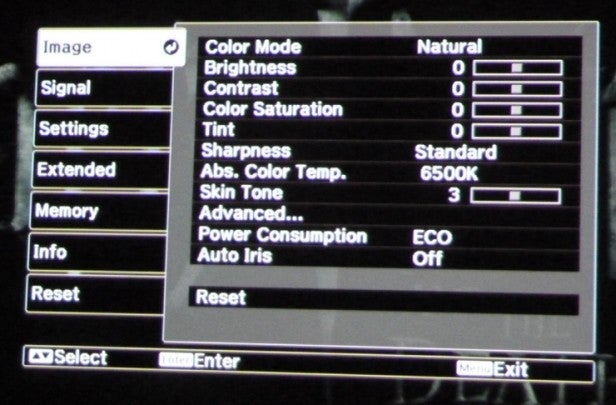
Now we’ve kicked into a more negative gear, we’d also say that if a source, even an HD one, is inherently noisy, it can look slightly processed on the TW9100W, even with the majority of the projector’s processing turned off. Just as well, then, that precious few of our favourite HD sources contain much source noise.
Colour errors
Also, even with the Correct LCD Align mode in play, we sometimes still spotted marginal reddish colour errors around bright lines and text. This won’t be spottable during 99% of your viewing time (unless you watch a lot of text-based PC applications for some reason), but it still rankles a bit that even when you can’t blatantly see the bleeding, it might be slightly effecting colour reproduction.
The single biggest flaw with the TW9100W, though, is the amount of input lag it suffers with. We measured between 100 and 130ms, even with the Correct LCD Align system switched off. And switching between the Fast and Fine processing settings didn’t seem to make any significant difference.
This isn’t a big deal if you’re a film fan only, but if like us you take big-screen gaming seriously too, 100-130ms of lag won’t do your performance any favours with ‘twitch’ games like Call of Duty.
WirelessHD input lag
We did find one way of improving the problem, though: taking the WirelessHD system out of the equation. Our measurements showed input lag dropping to around 65ms when using a normal HDMI connection instead – enough of a difference to make a few kills worth of difference in a typical online game.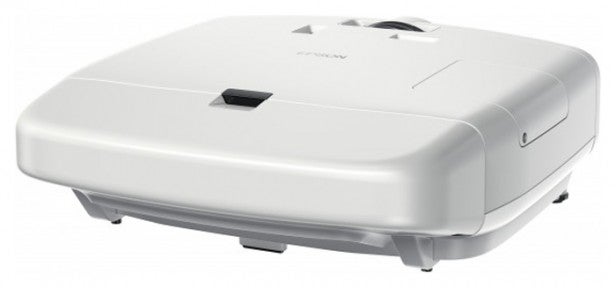
The last element of the TW9100W’s performance to cover is its running noise. Happily it runs almost completely silently if you’re using its Eco lamp mode, and even if you opt for the normal lamp mode – which isn’t really necessary unless you’re watching 3D or have a bit of ambient light in your room – it isn’t at all overpowering with its noise. This is a testament to the projector’s build quality considering how much brightness it’s capable pumping out.
Verdict
The TW9100W is in most ways an excellent projector for its price level. It outguns its closest market rival with 3D, and is hugely watchable and dynamic with 2D too. There are massive practical benefits to its WirelessHD system as well, in the way it gives the TW9100W more HDMI connectivity than any other projector on the market while also doing away with the normal cost and hassle of cabled projector installations.
There are, it must be said, more convergence issues in the projector’s ‘native’ state than we’d ideally have liked to see, but Epson has provided the tools to greatly reduce this problem without causing what we’d consider significant negative side effects. So we’d consider the TW9100W a ‘9’ product for film fans looking for sub-£3k projection thrills.
For gamers, though, it’s more of an 8 or even a 7 out of 10 on account of its input lag when you’re using the WirelessHD system. A lag figure in excess of 100ms just isn’t going to make gaming as much fun as it should be, and though you can reduce the lag to a much more tolerable 60-odd ms by taking out the WirelessHD system, if you’re going to do that then you might as well save £300 by getting the TW9100 instead.
Trusted Score
Score in detail
-
Value 8
-
2D Image Quality 8
-
Features 9
-
3D Image Quality 9
-
Design 8
Features
| Native Aspect Ratio | 16:9 |
| Projector Type | LCD |
| Brightness (Lumen) | 2400lm |
| Contrast Ratio | 320000:1 |
| Resolution | 1920 x 1080 |
| Full HD 1080p | Yes |
| 3D Ready | Yes |
| Max Diagonal Image Size (Inch) | 300in |
| Min Projection Distance (Foot) | 0.9feet |
| Max Projection Distance (Foot) | 19.2feet |
| Lamp Type | UHP |
| Lamp power (Watt) | 230W |
A/V Ports
| HDMI | 7 (inc 5 on the WirelessHD transmitter) |
| Component | 1 |
| Composite | 1 |
| WiFi | Wireless HD system |
Physical Specifications
| Height (Millimeter) | 140mm |
| Width (Millimeter) | 466mm |
| Depth (Millimeter) | 395mm |
| Weight (Gram) | 8.4g |

